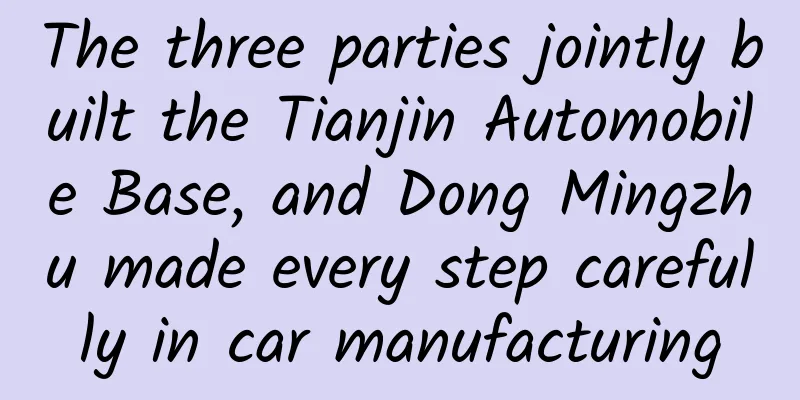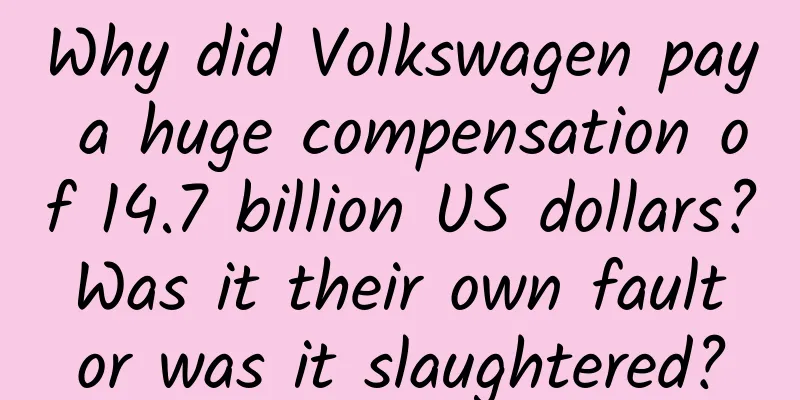From 0 to professional event operation

|
For friends who are engaged in event operations , this article can help you re-examine the framework of your own event operations; for friends who are interested in event operations but have not formally tried it, you can use this article to fully understand all aspects of event operations and improve your event operations capabilities. 3 things to consider before running an eventEvent operation is one of the basic tasks of operators. It is closely centered around users and content, and is an extension of user operation and content operation. Either don’t hold an event at all. If you are going to hold one, make it the essence and the highlight. So, to complete a beautiful online event, you need to understand three things: 1. All activities must take brand factors into consideration, otherwise it will be self-indulgent. It’s just like dressing according to your personal temperament. If you follow the trend, you will inevitably end up imitating others poorly. Event operation is related to the company's image and brand building, which allows users to have a deeper understanding of the brand. Therefore, we must first grasp the degree of integration between the event and the brand, starting from the standpoint of expanding the brand's positivity. 2. There must be an activity budget, but no budget does not mean that the activity cannot be held Wanting to organize an event but having no budget or a low budget is a headache for many operations personnel, but it does not mean that the event cannot be carried out. In the past, operators usually used virtual currency, virtual props, etc. to stimulate user participation. As event costs increase, we can now organize events through sponsorship from event participants and combining resources from all parties. In addition, operating without a budget will make you more cost-conscious and know how to do big things with less money, which is very helpful for improving your personal abilities. 3. Everything is aligned with the results When carrying out activities, we must have a clear judgment on the direction of the activities and be result-oriented. During the course of the activity, operators must have strict monitoring capabilities of the process, grasp the development trend of the activity, and align the direction of the activity with the purpose of the activity. Part 1 Activity preparation stage1. Clarify the purpose of the activity1. Understand the brand’s demands and launch activities around them. If the activity is aimed at brand communication, then the brand positioning and brand factors must be considered; if it is sales-oriented, then it is not a purely user-active activity, but a process of converting users into consumers; if the starting point of the activity is to increase user stickiness or cultivate user habits, then elements suitable for user participation must be added to the activity, such as adding factors that target users like in the participation and selection methods of the activity to increase their sense of participation. 2. Activities that are only for the purpose of completing KPIs and simply pursuing data goals. For reasons such as brushing data, taking advantage of hot topics, KPI, etc., sometimes we need to do such activities that simply pursue data goals. Generally speaking, such activities are suitable for major festivals, as they can quickly resonate with users and have an optimistic effect in attracting new users. Secondly, we need to increase the number of user participation links and provide a rich number of prizes to stimulate user participation. For example, during Christmas 2015, the Qihoo Community held a flash sale event with more than 20,000 prizes. Of course, many of them were gift certificates, Q codes, virtual currencies, etc., and there were only a few hundred physical items. 3. Determine the frequency and scale of the activity based on the purpose of the activity. First, it is necessary to clarify how many resources the company can match to this event, and how large the scale of the event can be after leveraging the power of other event participants; secondly, the frequency of activities is determined according to different event purposes. If it is just to attract user attention, then the quality of the activity itself is not high, and the quality of the users attracted is not high either, so the frequency can be reduced; if it is a brand activity or an activity to cultivate user habits, then every detail of the activity process must be perfected, down to the pictures, copywriting, prize settings, etc. 2. Make four preparations to ensure you are well prepared for the event1. Accumulation of user resources. User resources are a task that operators must accumulate. By accumulating different users, they can classify users into detailed categories, such as by occupation, hobby, gender, etc. After an activity is launched, it can be accurately pushed to users to stimulate a chain reaction of the activity and improve the quality of the activity. The accuracy of the user is related to the quality of the activity. 2. Understand and learn from your competitors. “Know yourself and know your enemy, and you can fight a hundred battles with no danger of defeat.” A very important part of operations work is to analyze competing products and competitors. Understand your competitors’ strengths and weaknesses; their weaknesses are your breakthrough points for surpassing them. For example, in the competition between mobile phone manufacturers, they will make a detailed analysis of the competing products, understand the shortcomings of the other party, and then combine their own advantages. Overall, their own advantages will gradually become prominent. 3. Coordinate internal and external resources of the department. Integrating and coordinating resources from different departments is also a capability that operations personnel need. When you coordinate internal and external resources of the department, in addition to amplifying the impact of the event itself, you can also make up for the shortcomings of event preparation due to insufficient resources. 4. Practice basic skills in daily life. How to make users understand and participate in the event as quickly as possible, how to make users feel that they are close to the prizes, and how to stimulate users' enthusiasm for participation, all these require daily accumulation. Part 2 Event PlanningCreative planning of activities1. Creativity is the most critical factor in event planning. The significance of creativity is self-evident. It can make the event more eye-catching and outstanding. So, how do you find creative ideas that will catch people’s eyes? First, plagiarizing other people's ideas is not a sustainable method and users will get tired of it. Second, you can let your colleagues come up with ideas and express their opinions in well-prepared meetings. Finally, you can understand users' concerns and bring more inspiration to your creativity. 2. The ultimate purpose of the activity cannot be violated. Creativity cannot violate the ultimate purpose of the activity, nor can certain factors in the activity process change the original intention of the activity. 3. Need to cater to the appropriate user group. The target users of the activity are different, so the title, copywriting, and content of the activity must be targeted. For example, if you are doing a mother-and-child activity, your language skills might tend to be cute and lively. 4. At the same time, ensure sufficient participation threshold, but the threshold cannot be too high. If the activity is simply for the purpose of scale, then the threshold for users can be lowered; if it is for the purpose of accumulating high-quality users, then the threshold for participation can be appropriately raised. However, we must ensure that the participation process of the event is clear, and we cannot make the event links very complicated so as to keep users out. 5. Be innovative and combine with current hot topics. In addition to attracting users and stimulating their enthusiasm for participation, combining hot spots can also attract some SEO traffic. For example, the currently popular internet celebrities can find the integration points based on their own brand characteristics. 6. Consider communication. After the event is launched, we need to leverage the power of users to share and make the event a hit. You need to be familiar with the sharing rules of social platforms, such as how to get users to canvass for votes and how to use QQ or WeChat to encourage friends around you to participate. You need to consider many details. 7. Unleash the power of users. When organizing activities, pay attention to soliciting users' opinions and suggestions. For example, soliciting opinions from some core user groups, or even opinions on activity links, can also bring more inspiration to the event. Event copywriting1. A good title is half the battle. If the title is poorly chosen, the effect of the activity will be greatly affected. Because of a poor title, people cannot understand what the activity is about, and the user click rate will drop significantly. In addition to attracting user participation, a good title also allows people to see the basic outline of the activity at a glance. There is a lot of room for creativity in the way you come up with an event title, such as reflecting the prizes, the activity links, etc. 2. Promotional picture. Promotional graphics simplify the process of an event into pictures for dissemination. A good promotional graphic should include the basic elements of the event, including activity links, event time and location, prizes, etc. For example, when sharing photos, you can find a few representative works as the background. You can’t make a picture just for the sake of making an event. Making an irrelevant and good-looking picture will not be of much help to the event. The best thing is that no matter whether users read the title, pictures or text, they can understand the process of the event. 3.Activity background. Many event copywriting will use gorgeous sentences at the beginning to explain the background of the event, but the number of words must be controlled within 200 words. Users come to participate in the event, not to see you show off your literary talent. Therefore, use concise language to summarize and allow users to quickly enter the activity rules stage below. 4.Activity rules. The activity rules should explain the activity introduction and user concerns in detail, so that users know how to quickly participate in the activity. The details of the activity rules, for example, some important places can be marked in red, bold, and linked, such as the size of the image, the width and height of the image. The optimization of these details can make the description of the activity rules clearer and facilitate user participation. 5.Activity time. The time range of the activity should be written clearly, preferably to the minute, for example, the activity will start on time at 18:00 on the 26th. Simply speaking from the perspective of event participation, large-scale online events generally should not last more than one month, and three weeks at most, because if it lasts too long, users will forget about the event; simple events generally take at least three to five days; and events of normal frequency take seven to ten days. If the event requires a judging process, it may take two weeks. 6. Selection rules. The selection method should be as detailed as possible, for example, how users can win prizes, how the prizes will be distributed, etc.; also, whether the result of the activity will be determined by voting or by a panel of judges; if it is by voting, how to avoid vote-rigging (many activities add a similar process of judge review); in addition, find some well-known judges to increase the quality and level of the activity, which also requires the accumulation of some relatively well-known user resources on a daily basis. 7. Award setting. The first is the ratio of the number of winners, which can be set according to the number of your prizes; secondly, the prizes need to be photographed and the real pictures given to users, and the value of the prizes and the description of the prizes must also be clearly marked to attract user participation; finally, the prizes must be irreplaceable. 8. Notes. Unexpected factors are inevitable during the execution of an event, and they need to be explained clearly in the event copy to prevent people from taking advantage of loopholes. Sometimes there will be vote-rigging in voting activities, photos posted by people not being posted by the person themselves, etc. If this is not clearly explained in the activity copy, it is equivalent to assuming that this method is reasonable for users. Therefore, the precautions should be detailed to avoid possible accidents. Of course, at the end they will add the sentence "The final right of interpretation of this activity belongs to the company." How to increase the chances of event success?1. Take advantage of the situation and combine it with hot spots, festivals, online tasks, etc. You can combine the current hot figures, the materials contributed by the hot figures, and even learn how they do publicity techniques. 2. Leverage, exchange resources, integrate platforms, and collaborate across brands. When conducting cross-platform brand collaboration, you can direct traffic to each other, exchange resources, and quickly increase the scale of the event. 3. Pay attention to details. The details of the event include prizes (exchange, borrowing, sponsorship, etc.), judges, and interactive sessions, making the entire event interesting and smooth. 4. Accumulation of users before the game. Before the event starts, some users, also known as "supporters", need to be prepared so that the event can be quickly promoted after it starts. This way, after the event is launched, there will not be only a small number of users participating and very watery comments, which is detrimental to the event. Therefore, high-quality users should be prepared before the event, and the event will not be too bad. Part 3 Activity Execution PhaseNotes on activity execution1. Activity accountability. Activity tracking requires operations personnel to keep a close eye on the development of the activity every day, pay attention to the status of user participation, correct the details of the activity process, and ensure expectations. Activity accountability can ensure the execution of activities, and if there are loopholes in the activity rules, they can be optimized in a timely manner. The final focus of event operations is content and users, so during the execution of the event, high-quality works and users should be extracted as accumulation and sedimentation. 2. Exploring hot spots. Be good at discovering the highlights of an event, finding the people and things in the event as the hot spots and promoting them. For example, if there are some high-quality participants in the event, they can be used as additional single-point promotion, and people need to focus on the event itself. The formation of hot spots is inseparable from the promotion of social platforms. We must take advantage of the characteristics of different platforms and leverage the momentum for promotion. 3.Awards announcement. We should pay attention to the quality of the top winning works to prevent people from deviating from the purpose of the event through improper behaviors such as vote-rigging, and correct the activities in a timely manner to ensure the fairness of the event. In addition, the prizes are intended to reward users and content that contribute high-quality UGC. This also provides a content template for future activities, telling users what excellent content can win awards. Improve the efficiency of activity execution1. Guidance. The first is user guidance. We need to consider how to get more high-quality people to participate in each link of the activity and how to guide more people to join the activity. Therefore, you need to proactively look for high-quality users and contribute excellent content in advance. The second is the guidance of comments. After the activity is launched, meaningless comments should not be allowed to take over. Instead, appropriate guidance should be given to create a lively discussion atmosphere. Vulgar language and meaningless negative comments should be deleted promptly and should not harm other participants. The last step is to guide the content of the event. The operators need to collect and organize the content of the participants in a timely manner to facilitate other users to read and stimulate other users to participate. 2. Adaptability. Timely adjustments should be made based on the favorable conditions during the event. The event period can be appropriately extended and the prizes can be increased. Events cannot be held in a static manner. Violations in the event should be discovered and dealt with promptly. Violations should not be allowed to stifle the fairness of the event. Part 4 Activity summary stage1. Gains from the Activities1. Accumulation of users. After the event, we need to summarize what high-quality user resources have been accumulated, collect them and carry out special maintenance; discover "potential stock" users and focus on training them to build momentum for future activities. 2. Accumulation of activity experience. The difficulties encountered during the activities will help you make fewer mistakes in the future. Especially the highlights and details in the activities, which will consolidate the skills and techniques of organizing events and can be continued in the future. 3. Thinking about activities. Whether the activity has met your expectations, for example, how many people were expected to participate in an activity, what was the actual number of participants, etc., then you can effectively optimize the activity next time, and you can appropriately raise the goals to make a more accurate judgment on the activity. 2. Notes on Activities1. Activities are the explosion point of accumulated planning in daily operations. Activities need to be regularized and streamlined, with fixed times and rules; the basic operational skills such as content and copywriting need to be accumulated over time. Operations are a process of gradual development. 2. We must grasp the core and key links of the activity. The activity should focus on the process of user participation and the issues that users care about, rather than spending time on literary and rhetoric. 3. Activities are “created”, don’t wait for users to participate. Activities are not something that can be waited for. You definitely don’t have to plan to create an activity, launch the activity, and then wait for users to participate. 4. Prizes are not everything. If there are no prizes, you can coordinate resources with other departments of the company, or exchange some resources with other companies; in addition, the prizes should be diversified and enriched to give users more expectations. 5. Grasp the user's psychology and pay attention to more operational details. Start from the user's perspective and think about the problem in combination with your own activities. The frequency of activities should not be too high. It is better to do less but do it well. 6. The quality of activities is more important than quantity. We must ensure that the participating users and content of the event are of high quality, especially the winning users. We must not allow the event to be filled with the content of the event party. 7. Do less low-threshold activities. In order to ensure the effectiveness of the activities, we would rather do fewer activities with low barriers to participation, and focus on making the activities more refined and building them into brands. 8. Action is more important than theory. Operational work is all about gaining true knowledge through practice. When learning from others' experiences or ideas, you should learn more, practice more, and summarize more. This is also a must for a good operator. Author: The Prince Turns into a Frog Source: The Prince Turns into a Frog |
<<: Douyin teacher Li Bo's heartfelt family-every student can become an excellent student
>>: The secret of Kuaishou Express Ads
Recommend
Hilarious Mi Xiaoquan [Audio] Baidu Cloud Download
Hilarious Rice Circle [Audio] Hilarious Rice Circ...
Which animals are better able to withstand the effects of climate change?
Global climate change is becoming one of the main...
Türkiye discovered nearly 700 million tons of rare earths. Are China’s “trump card” rare earths no longer attractive?
Türkiye's discovery of nearly 700 million ton...
Have you heard of "molecular cuisine"? Maybe you have already tried it!
Review expert: Meng Meng, associate researcher at...
Read the full text of Six-Fingered Doctor for free, and the latest chapter of Six-Fingered Doctor!
He was born with six fingers on his left hand and...
Guide to creating a Tik Tok corporate account!
Entering 2018, "Two Weibo and One Douyin&quo...
Why do most startup marketing fail?
The author of this article will explain the mista...
「Guangzhou seo」 How much does it cost to do website SEO ranking in Guangzhou?
This mainly depends on what keywords you need. Th...
The specific time schedule for the 2022 college entrance examination and the prediction of the admission score line for the 2022 college entrance examination!
The 2022 college entrance examination will start ...
Talking about the open Internet platform: "Decentralization" is the general trend
A few days ago, I talked with a friend about crow...
Will a herpes zoster outbreak kill you? One method is the most effective in preventing it!
gossip "Snakehead herpes and entanglement wi...
How do other countries broadcast the World Cup?
CCTV in China has a monopoly on the broadcasting r...
HTC M8 beats S5 but loses to Z2
This week, HTC released its latest flagship phone,...
Use "User Story Map" to split requirements and accurately define product MVP
If you are a startup and haven’t used user story ...









